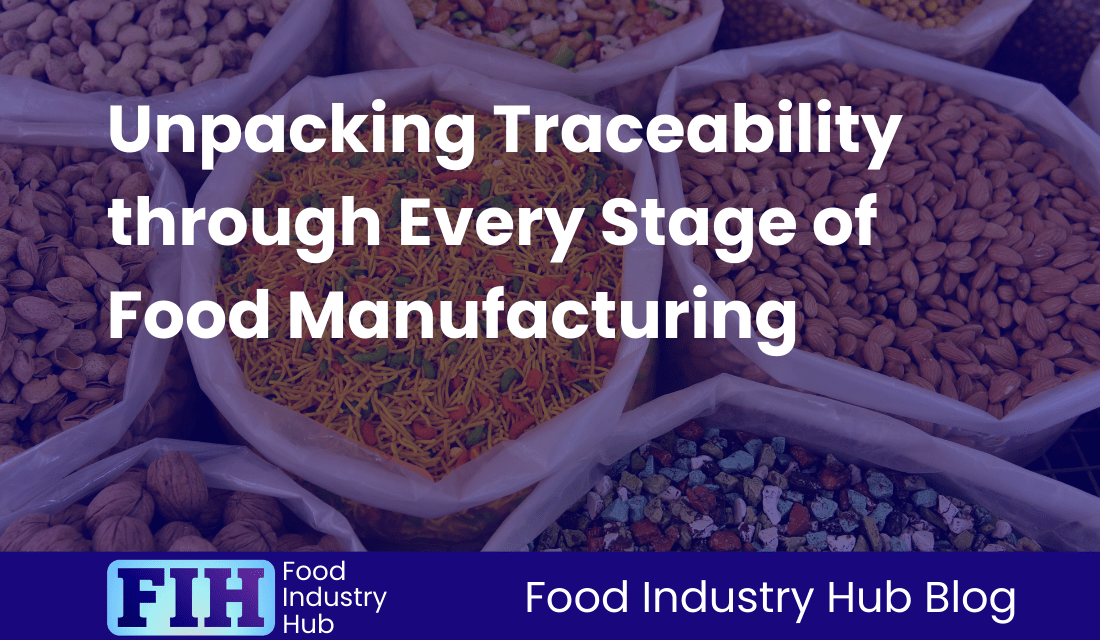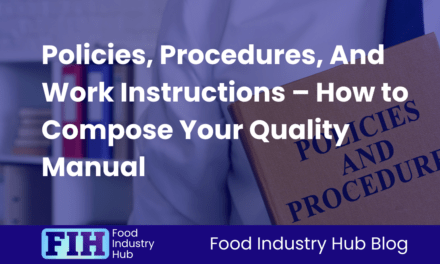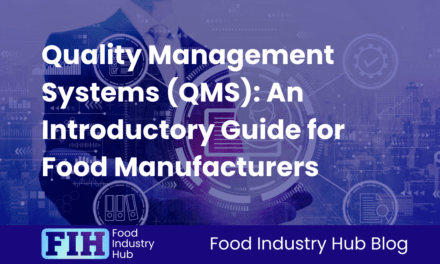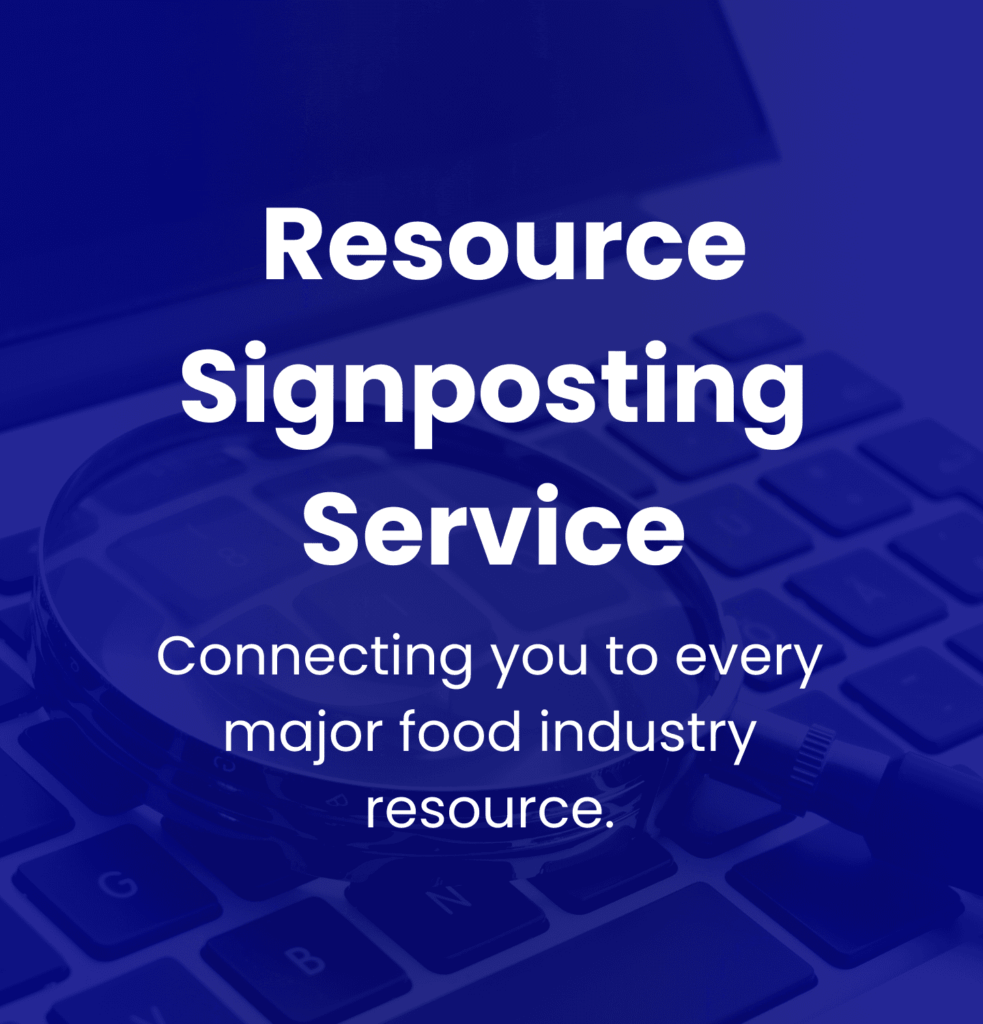Introduction
Having full traceability over food manufacturing and production can be a complex process. Every stage needs special consideration to ensure accurate record-keeping, help manage incidents and understand where things come from. This post looks at traceability through every stage of food manufacturing, ranging from raw materials to dispatch records and mass balance reconciliation. Join us as we explore how traceability can be used to guarantee the safety and quality of your products throughout the supply chain.
As we dive into the topic, you’ll be interested to know that Food Industry Hub offers integrated management systems for food manufacturers, which you can use to strengthen your assurance processes.
Table of Contents
Traceability Of Distinct Batches – The Importance of Maintaining Traceability Throughout Your Processes
Maintaining traceability throughout your production processes is key to ensuring the safety and quality of your products. Traceability of distinct batches enables you to track ingredients, materials, and products through each stage of the supply chain. When a batch has been identified as having an issue or is subject to recall, it can be easily isolated due to its unique tracking code which helps minimise costs and brand damage. This also allows for better root cause analysis in terms of identifying where problems have arisen in order to keep them from happening again in future batches.
Maintaining comprehensive traceability records enables businesses to reduce waste by improving inventory management and reducing overproduction or shortages. By understanding every step within their process flow businesses can make sure that they are efficiently using resources while still providing customers with safe and high-quality products.

With Food Industry Hub Management Systems, you can effortlessly manage complex quality and compliance challenges, staying audit-ready and confident every day.
Raw Materials – Recording and Labelling Batch Information Through Intake and Storage
It is important to ensure that the raw materials that you use in your food production process are properly recorded and labelled. This helps to guarantee traceability throughout the entire supply chain, allowing you to easily identify each batch of product and quickly isolate any issues or recalls if needed. During intake, all information about each raw material should be recorded accurately including quantities, suppliers, lot numbers and expiration dates. Labelling these batches with unique codes enables tracking through storage periods as well as during transit or distribution. By having a comprehensive system for recording and labelling raw materials at every stage of intake and storage businesses can ensure full traceability of their products from start to finish.
Premixes, Preparations, And Concentrates- Tracing Materials into Production Batches
Premixes, preparations and concentrates are often used as a way to make manufacturing more efficient. Where smaller quantities of certain ingredients are needed, premixes can be useful because different sensitivities of measuring equipment might be needed, or dilutions may be needed for accurate dosing.
Tracking the use of concentrates and premixes into production batches allows manufacturers to quickly locate works orders that these materials have been issued into. By monitoring premixes, preparations and concentrates from their sources through each stage of production, food businesses can guarantee that they are using only safe materials in their foods while also reducing waste due to overproduction or shortages. Traceability helps protect consumers while giving manufacturers peace of mind knowing that every step within their process flow is being accurately recorded and monitored.
Premixes and concentrates may be prepared on a different day than the production batch that they are used in – so where preparations are used, the traceability information for the mixture or concentrate should be recorded as input material into the production batch of product. It is insufficient to simply record traceability details for the raw materials used in the premix. This is especially important where more than one batch of the same raw material is used in a premix, or when an operational incident occurs during the production of a premix which wouldn’t have affected the individual input materials.
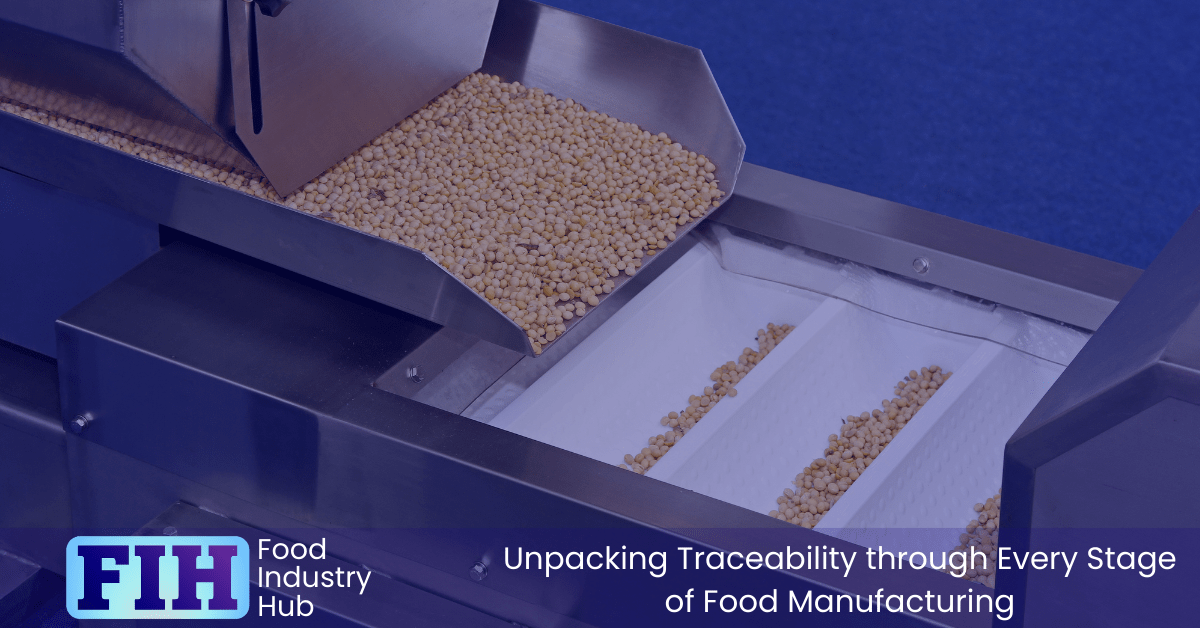
Record-Keeping Through Your Process – Maintaining Batch Details Through Manufacturing
Record-keeping throughout the production process forms a critical component of any food manufacturer’s traceability system. Often, the ingredients are most readily identifiable at mixing/addition into the process, but are less easily isolated at subsequent processing stages. Consider a mixing bowl feeding into a divider/depositor, which loads work in progress onto a conveyor with multiple catchment points. It would be convenient to imagine all processed material travelling along the process in a linear fashion with time segregation allowing for processed material to be tracked back to infeed, but in reality there is a certain degree of mixing throughout the manufacture process.
Most food manufacturers operating a batch process will group processed materials by the Julian date code applied to their manufacture date, so the mixing throughout the process is not significant to the traceability of dispatched products. Manufacturers operating continuous processes often employ similar cut-offs on a different scale, so for example each sack of material packed may have a different batch number applied to it. In either case, allowances must be made for the complexity of the process and propensity for mixing during manufacture so that records can be well maintained.
Don’t Overlook Food Contact Packaging – Treat Contact Materials with The Same Diligence as Ingredients
When it comes to food traceability, don’t overlook food contact packaging. All materials that come into direct contact with your products should be treated with the same level of diligence as you would treat any ingredients in your production process. It is important to understand the composition and properties of all materials used for packaging and make sure they are safe for use by checking against industry standards such as the materials intended to come into contact with food regulations. Additionally, it is essential to ensure traceability throughout each step of processing. Food manufacturers are required to be able to identify the batches of food contact packaging materials used in the manufacture of their products – not just the input food materials.
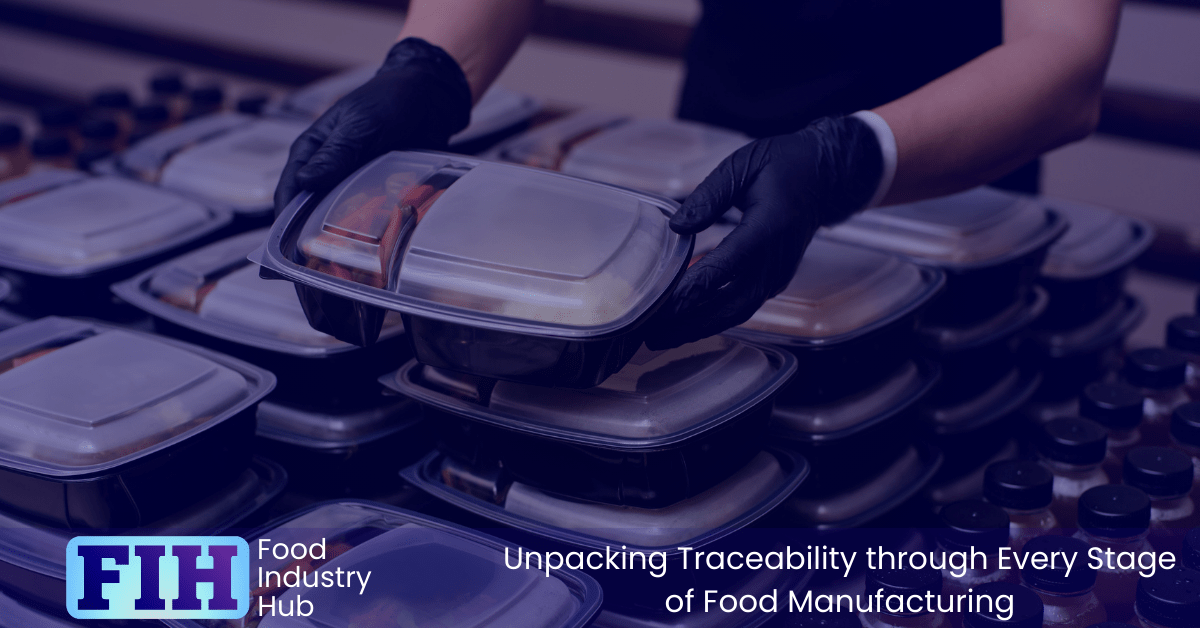
Sign-up for the Food Industry Hub Mail Service
We regularly produce new content for food industry professionals, and the Food Industry Hub Mail Service is the best way to stay up to date with the latest additions.
Signup today to be added to the Food Industry Hub mailing list.
Process Aids, Toppings, And Additions – Don’t be Caught Out!
Process aids, toppings and additives can be a great way to add flavour and texture to your products. However, it’s important to take into consideration the safety of these ingredients before including them in your recipes.
For traceability purposes, any processing aids or ingredients added at a later stage of manufacture need to be accounted for in the same way as raw materials added at mixing stage. In terms of record-keeping, this often results in the raw material traceability information appearing on process records separately to the mixing/weighing sheet – so it takes a bit of care not to overlook this when carrying out traceability exercises.
The site’s traceability procedure will need to accommodate for the recording and retrieval of traceability information for ingredients and processing aids applied post-mixing. For example, a bread roll topped with pumpkin seeds will need to be traceable back to the ingredients used in the dough as well as the pumpkin seeds applied later in the process – and the raw material information may be recorded on separate process record sheets.
Packing And Labelling Particulars – Ensuring your Packed Products Are Identifiable and Traceable
For packed product, traceability processes will need to accommodate batch information for the processed material being packed (so the back information for the food product that has been manufactured), as well as identifiers such as the Julian production date and best before end date for the packed product. Where products are packed on the night shift, it is possible that product may have been manufactured on the date before it is packed – so the traceability system would need to recognize that the date of packing is not necessarily the same as the date of manufacture.
Record-keeping should be set up to include the batch information for the food being packed, traceability information for food contact packaging materials, and labelling particulars applied to the packed product (such as the batch number and best before end date). It is prudent to retain samples of packs and labels throughout the production process, so that labelling information can be audited at any time. Keep in mind mistakes do happen – so the package and labelling information recorded on process records may not accurately reflect the package and labelling details applied to the dispatched product!
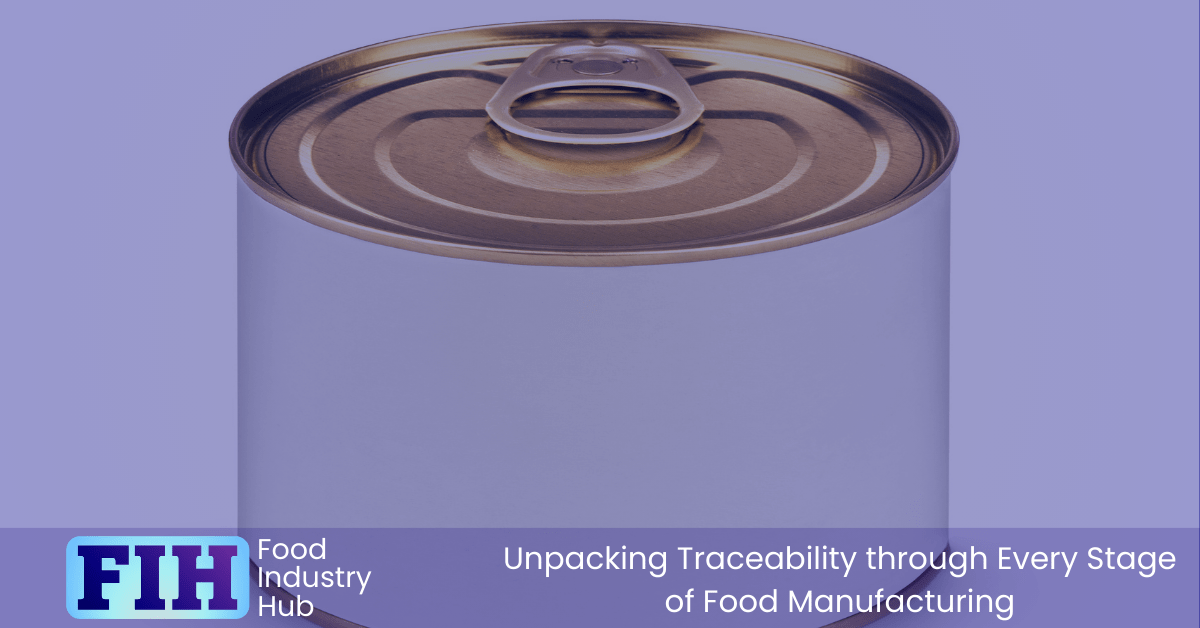
Dispatch Records and Destination to Customer or Depot – Onward Traceability Is Key
Dispatch records and destination to customer or depot is an important part of inventory management. Having a clear overview of where each item has been dispatched to, who received it, and when, helps businesses ensure that goods are delivered efficiently without any delays along the way. Additionally, tracking stock items right up until they reach their intended destination provides assurance that customers or depots have received what they ordered while also giving businesses extra peace of mind in case any issues arise during transit.
Onward traceability is key for successful inventory management as this ensures all goods are accounted for throughout the entire supply chain journey from production to final delivery at its intended location. Businesses should implement systems for recording dispatch details such as item name, quantity sent, recipient address and expected delivery date which can then be checked against actual arrival times ensuring everything arrives on time with no discrepancies along the way – this helps maintain customer satisfaction levels while avoiding potential problems caused by lost shipments. This is also critical for successful recall or withdrawal, so there is a definite food safety implication at play.
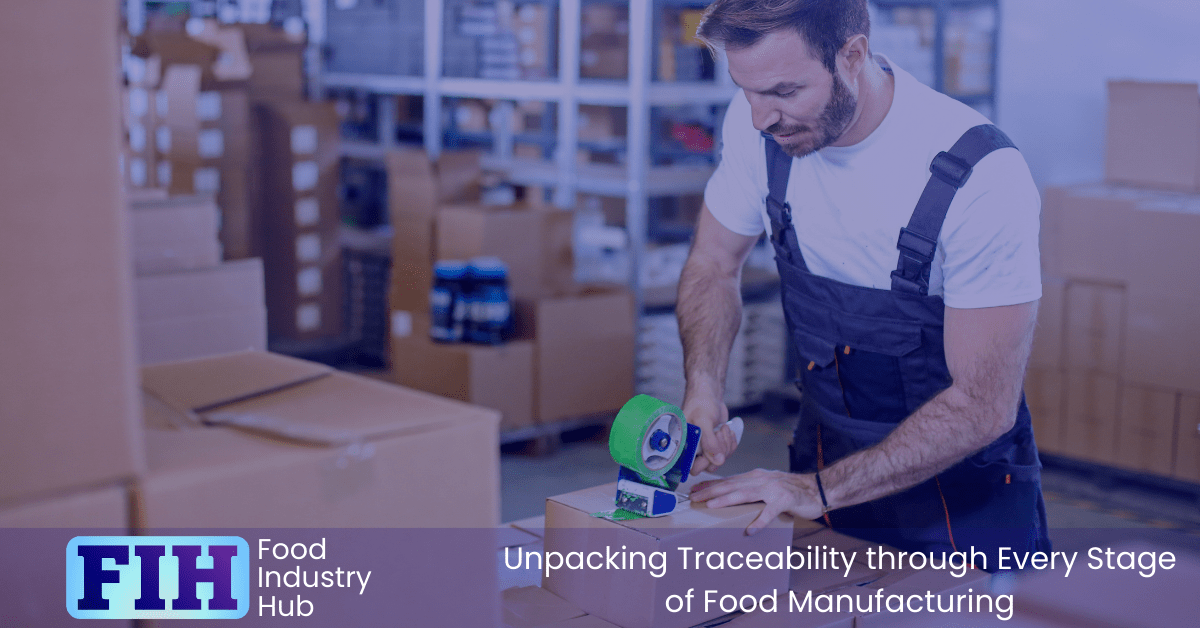
Achieving Traceability to Raw Material Intake Records from Finished Product Batch Identifiers
Traceability is important for ensuring the quality of your finished products, and achieving traceability from raw material intake records to finished product batch identifiers is essential. Through properly tracking materials used in production, you can know exactly where ingredients came from and how they were processed before reaching the final stage. By having this level of detail at hand, it’s easy to determine if something goes wrong during processing or transport so that corrective measures can be taken quickly and efficiently. Additionally, this helps businesses maintain high standards as they are able to keep a close eye on every step in their supply chain – all the way down to the raw materials being sourced.
In order to achieve full traceability between intake records and finished product batch identifiers, a variety of factors must be considered such as stock control systems, valid time frames for delivery and acceptance processes. Each item should have its own unique identification code which follows it throughout each process until completion; this allows producers to easily check back on any issue that may arise along with source information if necessary. Furthermore, through detailed record keeping businesses can ensure only safe foods reach consumers while maintaining transparency across their entire supply chain – ultimately creating an environment where customers feel confident buying from them.
Forward Traceability from Raw Material Lots into Finished Products
Forward traceability is essential for creating a successful supply chain that ensures the quality of finished products. It involves tracking raw materials from their original sources right through to when they become part of the finished product. This way, businesses can ensure that all components used in production are safe and free from contamination or spoilage issues along with being able to identify where any discrepancies may have occurred during processing or transit. Additionally, it gives producers detailed insight into each item’s journey throughout its life cycle – providing them with information such as what type of material was used, how it was treated and who handled it at every stage. All this helps create an environment of transparency between producers and consumers alike; allowing both parties to rest assured knowing that only safe and high-quality goods reach their intended destination.
Mass Balance and Successful Reconciliation – Substantiating That You Can Account for Everything
When it comes to mass balance and successful reconciliation, the key is to ensure that you can account for every single item in your inventory. This means having a reliable system or process for tracking goods from when they enter production until they reach their final destination. By keeping accurate records of each item’s origin, quantity, quality and movement throughout the supply chain journey businesses can be sure that everything is accounted for, and any discrepancies are quickly identified and addressed. Mass balance also helps businesses determine if any items have gone missing along the way as well as ensuring that all products meet industry standards before being sent out – helping them maintain high levels of customer satisfaction.
Successful reconciliation allows businesses to further substantiate that they can account for every item within their inventory by comparing what was expected against what has actually been received. For example, an accounting department may compare purchase orders with invoices to make sure the correct amount of goods were purchased while warehouse staff may check stock counts against shipment records; this ensures customers get exactly what they ordered without any surprises. Furthermore, traceability systems help provide extra assurance that each product arrives safely and on time – making it easier than ever before to keep track of incoming shipments right up until its delivery at its intended location.
Many assurance schemes such as RSPO and fairtrade require manufacturers to perform mass balance exercises on raw materials used in order to demonstrate that all input materials used in production have been drawn from a positive stock pool. This plays a key role in verifying authenticity of finished products, along with any claims made.
The Role of Traceability in Managing Incidents, Recall, And Withdrawal – Why It Matters
Traceability is an essential part of managing incidents, recalls and withdrawals. By being able to trace back each product through its entire journey – from raw materials to finished goods – businesses can quickly identify any issues that may have occurred during processing or transport so they can take corrective measures before it’s too late. Additionally, traceability helps maintain transparency across the entire supply chain; customers feel confident knowing that only safe and high-quality goods reach their intended destination. Furthermore, having detailed records allows producers to easily keep track of incoming shipments right up until its delivery at its final location which helps ensure no products are lost along the way. All these factors help prevent costly errors such as contamination or spoilage while also providing peace of mind for consumers who know exactly where their food has come from.
Ultimately, recall and withdrawal of unsafe food is only possible in the context of a traceability system that enables manufacturers to identify every finished product batch that raw materials have been used in, as well as the recipient customer or depot for each batch of finished product. This makes successful and reliable traceability critical for the safety of the food supply chain, from origin of raw materials through supply into the retail setting.
It is clear to see the immense importance of maintaining traceability throughout all stages of the process. From raw material intake records through to packing and labelling particulars, understanding not just where but also what came into your product can prove invaluable when managing incidents, recalls and withdrawals. With proper planning, recording every step with diligence and having mass balance reconciliation in place for full traceability, food safety management becomes a wholly achievable goal.
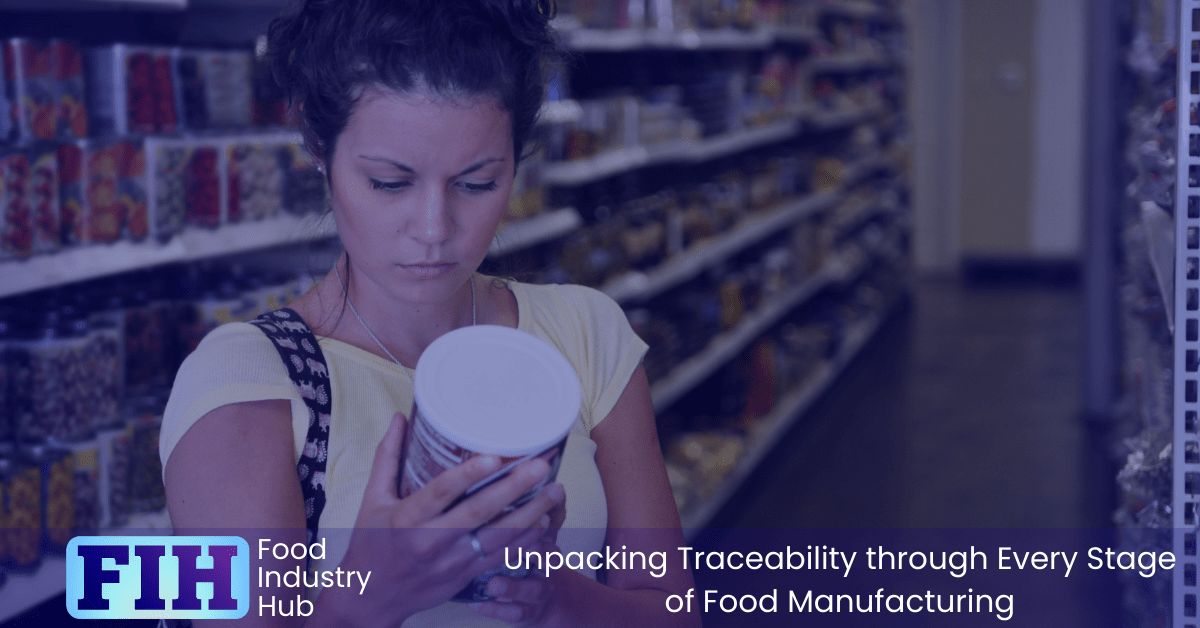
In Summary
Traceability is a fundamental area of quality assurance for food manufacturers. Not only is traceability a legal requirement, but it facilitates activities such as stock management and product recall.
Maintaining traceability from intake of raw materials through dispatch of finished products requires investment of effort and resources, but it’s well worth it for all food manufacturers.
Further Resources
Food Industry Hub serves the food industry with a range of digital resources for the benefit of both commercial food manufacturers and food industry professionals.
For food manufacturers, we offer integrated management systems that give every user a direct interface with your QMS.
For food industry professionals, we provide an extensive signposting service in addition to informational content we hope you’ll find useful as you face new professional challenges. We have very ambitious plans to expand the range of services offered, and currently present informational content on management, safety and quality, and professional success.

